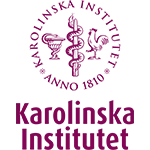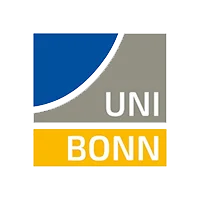Explore the credit course catalogue
8 Results

Do you need to turn data into a publication figure? We offer tools and confidence for the student to independently select a statistical method for research questions in their field. The course is practical and includes implementing a basic statistical analysis in R, the leading statistical programming language in bioinformatics and medical science. Furthermore, we give a brief introduction to visualization in R, with a focus on R/ggplot2. Students can bring data from their own research project, or work on data from the course.

The course content lean on Design thinking ideology and methodology that inform research as well as developmental work and form a practice-based foundation for innovation aimed to meet the needs of societal and scientific environments. As a student, you work individually from your own research perspective, and get helpful insights for future research.
The course apply a problem-oriented teaching and learning style, with a pedagogy that enables students to take active responsibility for individual and also group learning in a multi-disciplinary context.

Progress in medical innovation stands as a catalyst for worldwide economic growth. Whether within pharmaceuticals, medical devices, biotechnology, information technology, or a fusion of these advancements, the potential advantages extend significantly to private businesses and societal well-being. However, due to long development times and rigorous regulations, these innovative concepts require a lot of financing to establish their presence in the market. Consequently, assessing the value of novel medical innovations remains crucial. The primary objective of this course is to empower researchers with the proficient capability to effectively assess the worth of emerging technologies or processes within the medical industry.

The course aim is that the doctoral student develops a theory of science approach by enabling the doctoral student to understand, employ, reflect upon and critically assess concepts and ideas of theories of science as well as their implications for in particular medical scientific practice. A further aim is to enable the doctoral student to understand, reflect upon and critically assess views on and implications of definitions of health and disease.

The course will introduce neuropsychological assessment in an aging population, focusing on age-related cognitive changes and their neural correlates. An additional purpose is to increase understanding of cognitive aging and how to differentiate between non-pathological cognitive aging and early signs of pathology. After the course, you will be able to define and describe common neuropsychological concepts and measurement techniques and demonstrate an overall understanding of neuropsychological investigation methodology and cognitive diagnostics in aging. The course will give you an increased understanding of cognitive aging and the complexity of differentiating between “normal” and early-stage pathological aging.

We will investigate mainly fish brains, but also some invertebrate model systems to get on overview of the major differences in neuronal organization between them. Sensory and motor pathways will be compared and pathways will be traced from primary sensory centres through higher integrative centres to motor command areas.

Topic 1: Pharmacologically relevant signalling pathways
Topic 2: Drugs for the treatment of pain: local anaesthetics, opioids
Topic 3: Drugs influencing vigilance: hypnotics, general anaesthetics
Topic 4: Treatment of psychiatric diseases: antipsychotics, antidepressants
Topic 5: Drugs of abuse: opioids, cannabinoids
Topic 6: Neurodegenerative disorders
Methods 1: Drug mechanisms and signalling in neurons
Methods 2: Modulation of neurotransmitter release in brain slices
Methods 3: Standard behavioural tests in drug development - pharmaceutical industry
Methods 4: Development of innovative drugs – gene and cell therapies
Methods 5: Regulatory Affairs

Methodology and Theory of Cognitive Neuroscience:
- Psychology: what makes it a science?
- Experimental strategies: psychophysiology, neuropsychology
- Philosophical implications of cognitive neurosciences
Cognitive Neuroscience: main findings on brain-function relationships
Clinical Neurophysiology and Imaging:
- Electroencephalography (EEG) as a neurodiagnostic tool
- Advanced methods of EEG analysis: coherence, fast Fourier, non-linear and other analysis
- Structural and functional brain imaging as neurodiagnostic tools
Experimental Psychophysiology:
- Electrophysiology: event-related potentials, non-invasive and invasive
- Magnetic resonance tomography: functional neuroimaging (fMRI)
Clinical Neuropsychology:
- Neuropsychological assessment
- Cortical electrostimulation
- WADA test
6. Experimental Neuropsychology
- Animal models of behavioural deficits in epilepsy


